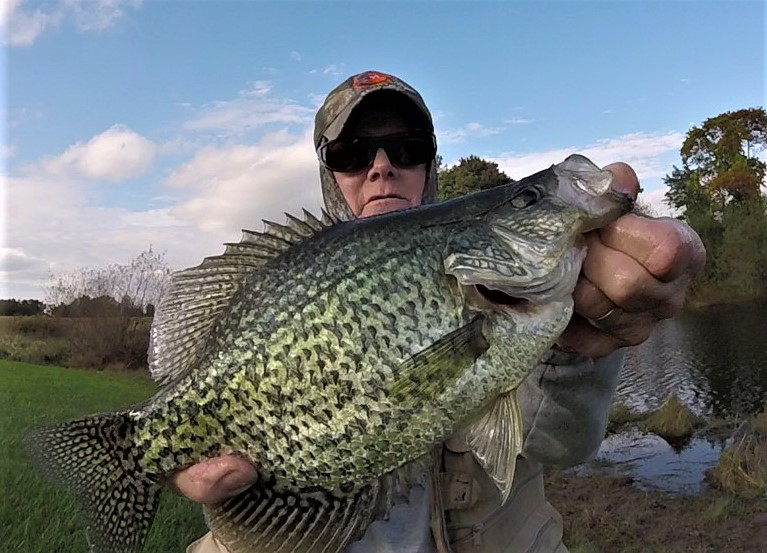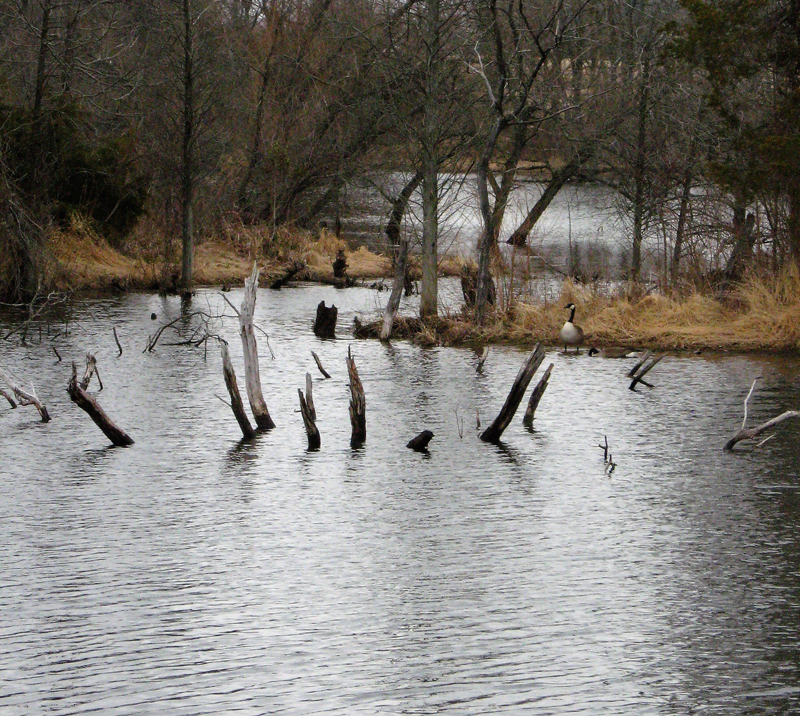Every year I look forward to the autumn months when slab-sided crappie are putting on the feedbag to fatten up for the winter months. Temperatures are dropping, leaves are falling, and northwest winds may be blowing in the Mid-Atlantic region. But shallow movements of crappies to remaining weeds, brush, and fallen wood will be an annual event in many of our lakes and rivers. I’m stoked!

Various weather patterns trigger this shallow movement of these fish during October, November, and well into December. For one, the photoperiod, or length of daylight, is diminishing every day. Nighttime lows can dip into the 30s and water temperatures are plummeting as well. In larger lakes and reservoirs, the winds from the west and north are mixing the shallow-to-deep layers as the fall turnover begins. When waters read 58 or 59 degrees this is usually occurring. During the actual turnover fishing can be sporadic and poor, however, once the waters dip into the lower 50-degree range the fish stabilize and relate to shallow structures that hold baitfish and young-of-the year bluegills and bass.
Equipping for Crappie Fishing
Most devoted panfish anglers have their favorite crappie fishing outfits and they may vary in detail. Personally, I have been a recent convert to longer rods in the seven- to eight-foot range. Light to medium-light action sticks with fast action have been my weapons of choice for longer casts, sensitive strike indication, and better hooksets with plastic and hair jigs. I have two St. Croix Panfish Series rods like this as well as a Fenwick Eagle Series seven-footer and a Daiwa Presso at seven-six. With any of these rods I can cast a 1/32-ounce jig 70 feet and have the sensitivity to feel the bump from a biting slab. For super long casts I like a Wally Marshall eight-foot rod or the nine-foot Shimano Convergence.
Reels, again, are traditionally a matter of choice. Where I fish, there is always a chance for a four- or five-pound bass to intercept your jig. Hence, I shy away from standard ultralight reels. Lews Speed Spin and Shimano Sienna reels in 1500 or 2000 series get the call and handle four-pound mono or 10-pound braid equally as well. The mono can be a little light if you are into a woody brush-pile situation, but works fine for schooling fish that are in transition from one area to another.
Seducing the Slabs
Probably 90 percent of my fall crappies are caught on either a plastic or a hair jig. Again, there are a ton of crappie plastics out there, but I’ll name my favs. The Bobby Garland Baby Shad Swim’r at 2.25 inches with a jointed body catches a lot of fish, and is perfect for casting on a 1/32-ounce Eagle Claw Ball Head Jig with the “Pro V Bend” hook. The Strike King two-inch Lightning Shad is another that pairs well. Perhaps the most durable option is the 1.6-inch Donkey Tail Jr. made by Mule Fishing Supply, as it stretches without tearing and one lure can easily endure 100 fish.
Colors matter… sometimes. I have seen days where only pink, or black, or whatever was the only color the fish would hit on. And some days it simply doesn’t matter. I have always thought that size was more important than color, but crappie can be picky, so it pays to have a variety of hues to make the adaptation. Traditionally, pink, chartreuse, blue-ice, or black catch a bunch of fish, but white and silver have had their day. Experiment.
Hair jigs can, at times, outshine the plastic crowd with their lifelike flowing action. Hair jigs seem to do best where a subtle vertical presentation is needed tight to wood or brush. My preferred colors are pink, silver and black, and white minnow patterns that measure two inches in length.
At times, suspending the jig below floats or bobbers is best due to the need to maintain the jig at a specific depth. Traditionally, we have one angler set at three feet deep and another may fish at the five-foot depth.
There are times when casting small crankbaits can produce some very large crappie in the autumn months. The Rapala UL Shad series and Crème Hard Baits have proved effective on 14-inch class slabs that at times ignored the standard array of jigs. The Strike King Bitsy Minnows are another option. My only gripe on the crank bait gig is that most stock treble hooks on these lures are too small to effectively hook and hold larger crappies; I change out the trebles with a number-six hook.
Crappie Catching Tactics
When fish are tight to weed beds and deep into cover vertical jigging on a long rod can get fish out of the tangles. Suspended jigs with floats are another way to coax crappies away from the cover. This will mean the loss of some jigs, but that may be the ticket for a mess of slabs on a bright sunny day. And by all means do not let cloudy or stained water scare you off your favorite crappie hole in the fall. We have had some of our best days when waters were high and stained from recent storms.

Ideally, I like to seek and catch crappies that are schooling up and cruising the outskirts of fallen trees, weed beds, and brush piles, and are eager to strike a jig on the retrieve. I love the feel of the “thump” at the rod tip and setting the hook to a solid, one-pound-plus slab as it stretches your line and heads for cover. Often, the wind can dictate crappie location in smaller venues where plankton, minnows, and actively feeding crappies stockpile along windblown shorelines that concentrate both food sources and panfish. Don’t be surprised if you encounter slab bluegill or a quality largemouth bass in the midst of a feeding frenzy with the larger slabs.
Ultimately, you may want some delicious fillets for the pan. But in reality, you should not keep exclusively the largest fish in all waters. Every lake or river is different, and some have an abundance of big fish but others do not. We like to keep 10- to 12-inch fish for the pan and release the fish larger than that to maintain the potential for trophies. That giant 17-incher is the fish of a lifetime — treat your favorite crappie waters with respect and big fish will be there for years to come.
-By Jim Gronaw
For more information on crappie fishing, also see:
Winter Kayak Fishing for Crappie